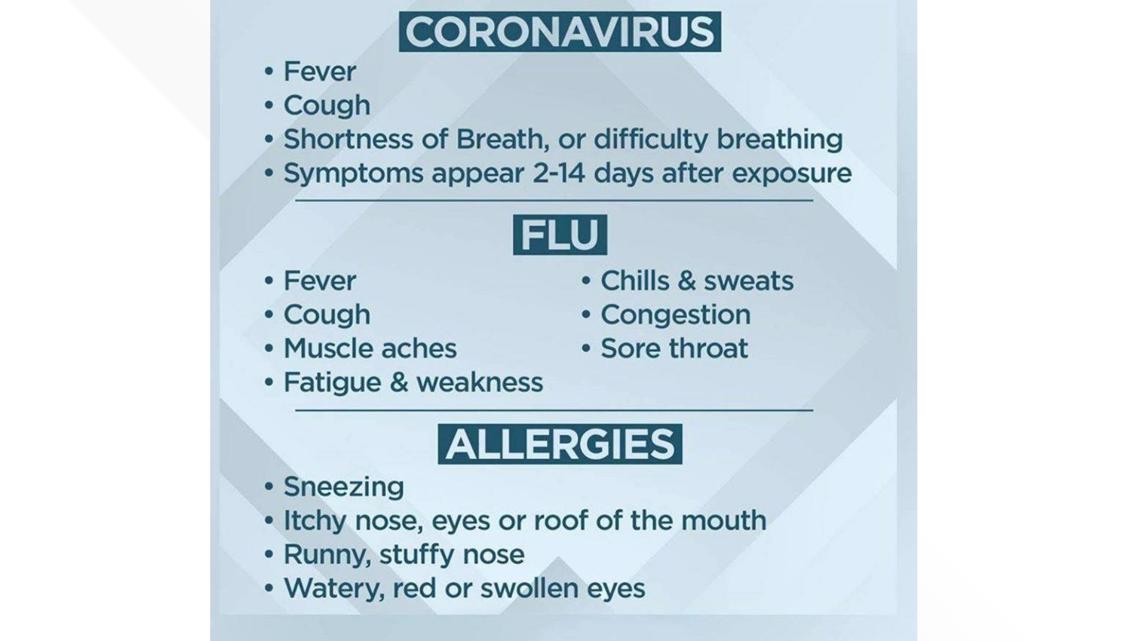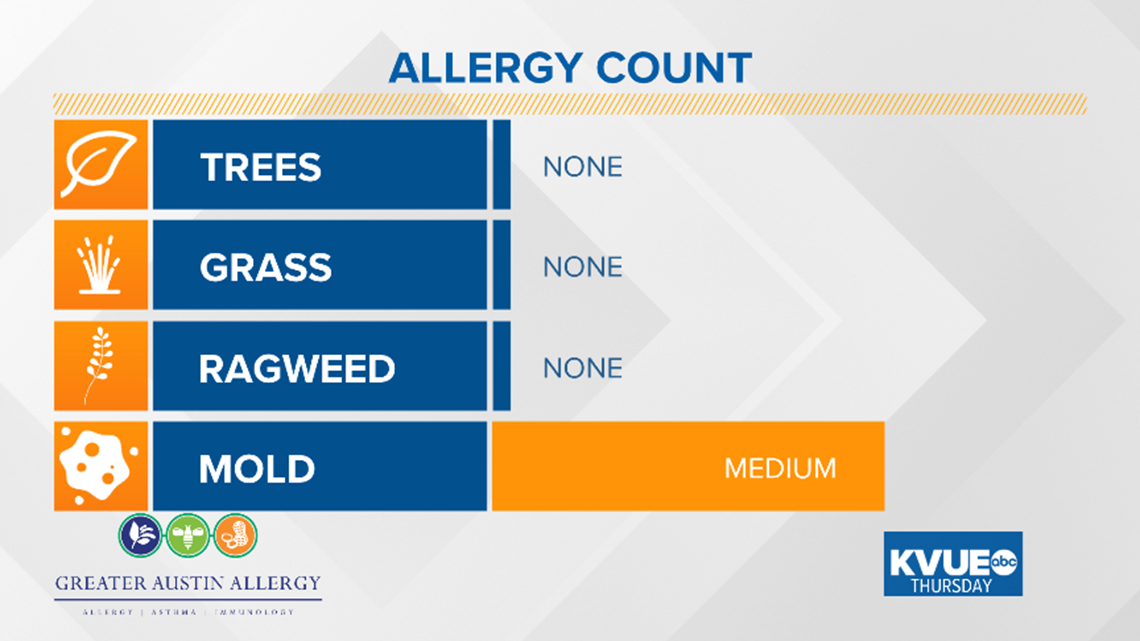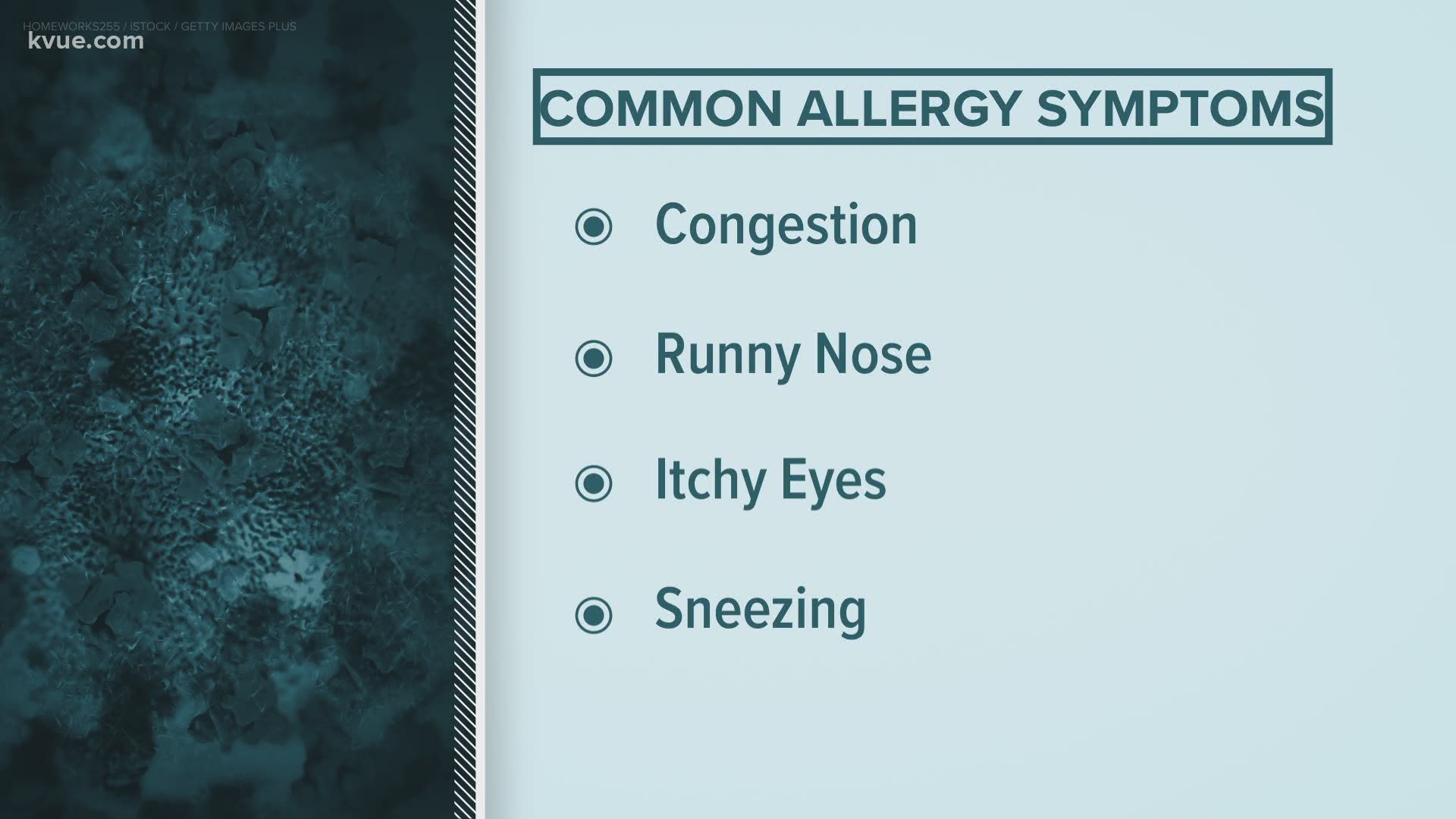AUSTIN, Texas — Mold has been the dominant allergen recently in Central Texas and has been mostly in the medium or high count over the past week. Allergies have many feeling ill and wondering how their symptoms differ from coronavirus.
In addition to mold, grasses, ragweed and mulberry have also been detected in lower amounts over the past three days. The most recent allergy count for May 28 shows mold in the medium count with no other allergens detected.
Elevated mold counts can cause many allergy symptoms such as sneezing, itchy eyes and nose, runny or stuffy nose and watery or red eyes. The other allergens over the past several day such as grasses, ragweed and mulberry contribute to these symptoms also.
It is important to note that these allergy symptoms differ from those of COVID-19, which include fever, cough, shortness of breath or difficulty breathing.
Allergy symptoms also differ from common flu symptoms such as fever, cough, muscle aches and sore throat.


Southerly and southeasterly winds have been a frequent weather pattern in Central Texas recently, and this is likely a contributing factor for the elevated mold levels along with recent rains.
RELATED: Today's Allergy Report


The forecast over the next several days calls for a drier weather pattern along with a more northeasterly or easterly wind direction.
This may contribute to slightly lower mold counts in the days ahead, but grass and tree pollen will still need to be monitored. A return to southeasterly winds is in the forecast by Monday of next week. These wind directions tend to result in higher moisture levels and higher mold counts.
Download KVUE's app for the latest allergy and weather updates: kvue.com/app.
PEOPLE ARE ALSO READING:

